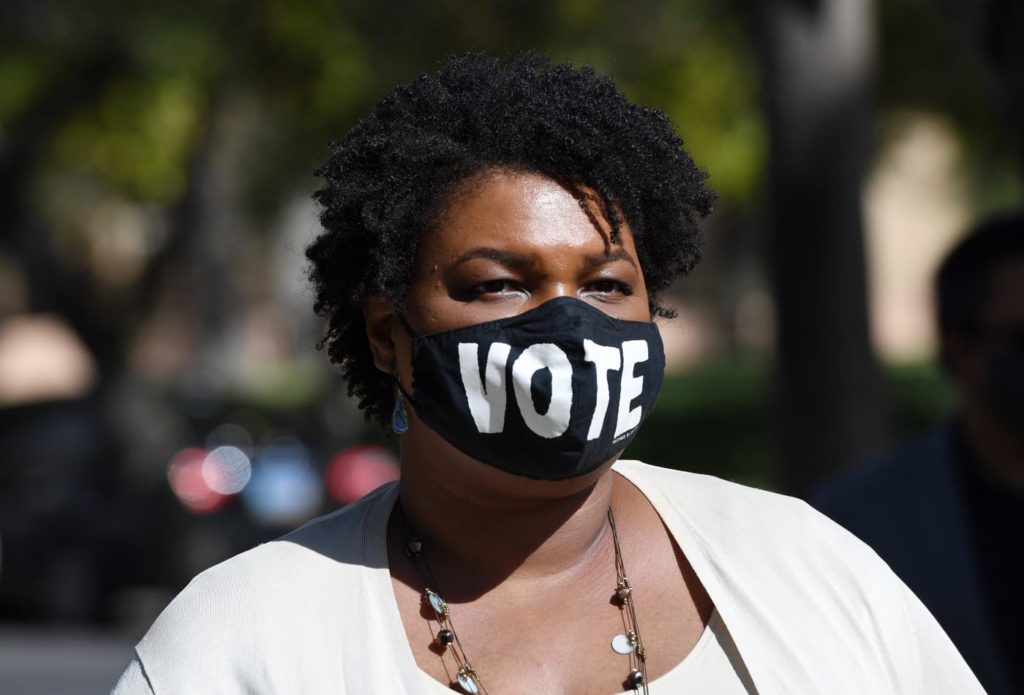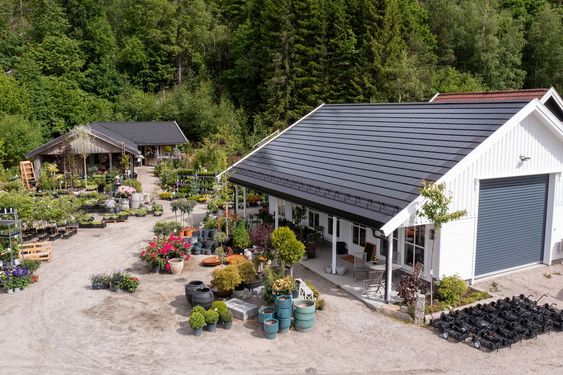
Ethan Miller | Getty Images
“Until you’ve proved it’s possible, then it’s always potentially impossible.”
That’s what Stacey Abrams, the former Georgia House of Representatives minority leader who ran for governor of the state in 2018, said four years ago about the prospect of turning Georgia blue.
It’s a goal that builds on her lifelong commitment to voting rights, chronicled in a recent book and documentary, and on her own 2018 race, which she has maintained was lost owing to voter suppression by her opponent and not because of the true results of the political matchup.
This week, all he years’ Abrams and her allies spent convincing Black and brown voters in Georgia that their voices mattered—and her efforts to convince the Democratic establishment to pay attention to those voters in the state—paid off.
The Biden ticket pulled ahead of Trump in Georgia early Friday morning, helping to tilt the presidential election in favor of the Democrats in the homestretch. The last time Georgia voted for the Democratic presidential nominee was in electing Bill Clinton to his first term in 1992.
While Abrams credits the efforts of Georgia voters, activists, and volunteers far beyond herself—including the late Rep. John Lewis—it’s undeniable that her hard work and vision played a crucial role in this achievement for the Democratic Party.
So many deserve credit for 10yrs to new Georgia: @gwlauren @fairfightaction @nseufot @NewGAProject @AAAJ_Atlanta @GALEOorg @BlackVotersMtr Helen Butler @GeorgiaDemocrat @RebeccaDeHart DuBose Porter @DPGChair. Always John Lewis. Charge any omissions to my head. My heart is full.💙
— Stacey Abrams (@staceyabrams) November 6, 2020
In 2016, Abrams explained her Georgia strategy: as President Obama did in North Carolina in 2008, turn out Black and brown voters likely to vote for the Democratic Party while simultaneously appealing to white moderates. But, because of differences between Georgia’s electorate and North Carolina’s, she argued that the white moderate approach should be a smaller part of the equation for Democrats in the Peach State. Georgia Democrats, Abrams said, should put their resources behind the Black and brown voters who, if encouraged to turn out, would support the party.
In her own 2018 election, Abrams had the opportunity to put that strategy to the test. Her GOP opponent in her bid for governor was Brian Kemp, then Georgia’s secretary of state. In that role, he controlled the election process while also running in the race. In the course of the campaign, Kemp’s office purged voters from the rolls and closed polling places. Abrams, who ultimately lost by a narrow margin, has said that those actions, along with resulting long wait times at polling places, especially for Black voters, were the deciding factors in her defeat.
Despite the loss, Abrams’s run significantly narrowed the 200,000-vote lead Republicans had held in the state for two decades in most races, according to Charles Bullock, a professor of political science at the University of Georgia who studies politics in the state and in the South. In the 2018 governor’s race, that Republican lead was closer to 45,000 votes, while in this week’s election, Biden was ahead by a margin of about 1,000 votes on Friday. “She set it in motion,” Bullock says of Democrats’ surge in the state.
Abrams’s strategy included not just engaging Black voters but getting former nonvoters registered; in Georgia, her organization Fair Fight helped register 800,000 new voters in Georgia in the lead-up to this election. Before her run for statewide office, Abrams founded the New Georgia Project, which similarly worked to register new voters of color in the state.
The strategy doesn’t appear to have been enough to flip districts in down ballot races this year, although Democrat Carolyn Bourdeaux has eked out ahead of her opponent in the state’s Seventh Congressional District, and Democratic Rep. Lucy McBath held on to her seat in the Sixth. Georgia’s two Senate races are headed to runoffs in January.
In the past two years, Abrams has expanded her view beyond Georgia as she’s taken on voter suppression as an issue nationwide. Her organization Fair Fight has recruited volunteers across the country to reach voters and monitor elections.
There’s a lot of totally correct talk about how @StaceyAbrams was pivotal to winning Georgia. Folks: Stacey & her team were pivotal to flipping Wisconsin too. And every other battleground. They worked with us to build massive, supercharged voter protection teams—starting *early.*
— Ben Wikler (@benwikler) November 6, 2020
Wisconsin is the home of the nailbiter. Here’s a slide I’ve been using in presentations for the last year. Adding in 2020, four of the last six presidential races here have had under 1% margins.
Ignore polls: You have to run like you’re two points behind. pic.twitter.com/PUUTK8wcHj
— Ben Wikler (@benwikler) November 5, 2020
So many deserve credit for 10yrs to new Georgia: @gwlauren @fairfightaction @nseufot @NewGAProject @AAAJ_Atlanta @GALEOorg @BlackVotersMtr Helen Butler @GeorgiaDemocrat @RebeccaDeHart DuBose Porter @DPGChair. Always John Lewis. Charge any omissions to my head. My heart is full.💙
— Stacey Abrams (@staceyabrams) November 6, 2020
There’s a lot of totally correct talk about how @StaceyAbrams was pivotal to winning Georgia. Folks: Stacey & her team were pivotal to flipping Wisconsin too. And every other battleground. They worked with us to build massive, supercharged voter protection teams—starting *early.*
— Ben Wikler (@benwikler) November 6, 2020
Wisconsin is the home of the nailbiter. Here’s a slide I’ve been using in presentations for the last year. Adding in 2020, four of the last six presidential races here have had under 1% margins.
Ignore polls: You have to run like you’re two points behind. pic.twitter.com/PUUTK8wcHj
— Ben Wikler (@benwikler) November 5, 2020




8 Comments
Pingback: ลวดสลิง
Pingback: รวมเว็บพนันออนไลน์
Pingback: Amanda Ghost hooker
Pingback: ล่องเรือเจ้าพระยา
Pingback: Calculix
Pingback: car detailing
Pingback: จอ led ขนาดใหญ่
Pingback: PGSLOT วอเลท โบนัสแตกบ่อย